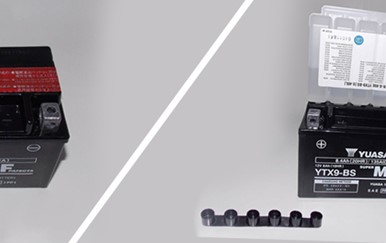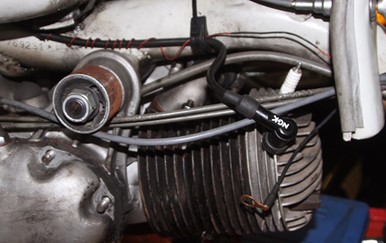Whether you own a motorcycle, a scooter, or a moped – each one of these vehicles requires regular maintenance to keep it performing both safely and effectively.
Spark plugs are essentially one of the biggest key components of your combustion engined motorcycle - Without spark plugs, or failing spark plugs, you will not be going anywhere.
With that being said, today in this article we are going to be covering everything spark plugs, and the tasks you can carry out at home to save yourself a little bit of cash.
In this article we will be covering:
- What is a spark plug
- 5 signs you need to replace your motorcycle spark plugs
- Different types of spark plugs and their benefits
- Tools you might need to change a spark plug
- How to replace your motorcycle spark plugs
- How often do motorbike spark plugs need replacing?
What is a spark plug?
First things first, spark plugs are used by your motorbikes ignition system in order to generate the sparks to ignite the air and fuel mixture in a petrol engine.
5 signs you need to replace your motorcycle spark plugs
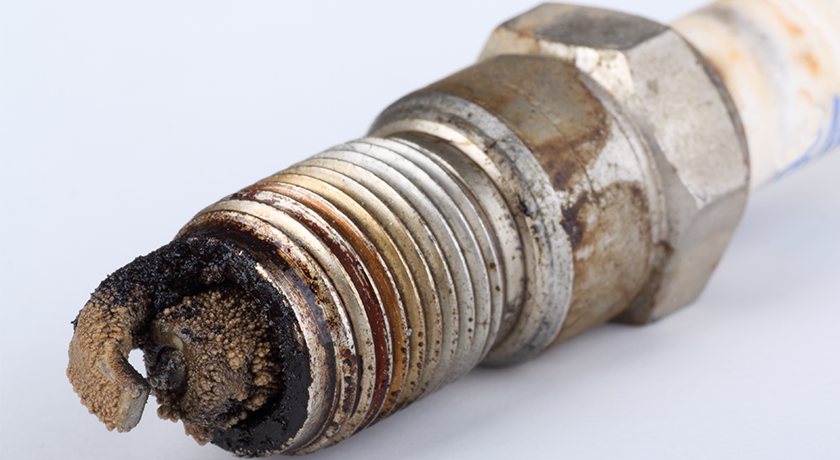
1. Your spark plugs are in a bad physical condition
While this may be an obvious one to start off, if you see any signs of burn marks, broken tips, rust, or corrosion on your plugs, this is a very strong indicator that you will need to replace your spark plugs.
2. Your engine is misfiring
One of the most common ways you can tell if your spark plugs have gone bad is if your engine has begun to misfire when starting it up. You can usually notice this when your engine goes off rhythm for a few seconds once you turn it on.
If you’re having issues with misfiring this means that your spark plug could be damaged and is not arching at the tip at the right time, throwing the engine combustion off.
3. Flooding in your engine
If you’re experiencing excessive cranking in your engine, it may mean your motorcycle has a spark plug and wire configuration problem.
A good indicator to tell when your engine is flooded is that you will often smell a strong stench of petrol coming out of your engine while it is on. This is because the combustion chamber is filling with petrol and isn't being combusted.
4. Issues with backfiring
If you hear random loud pops coming from your exhaust, this may be a sign that your motorbike is having a backfiring problem.
This can occur when your plugs are producing an intermittent spark, which nine times out of ten will work just fine, but may fail every once in a while.
5. Can smell petrol spraying out of the exhaust
In the event that your sparkplugs are malfunctioning and not giving a spark at the right time, this means you will have leftover fuel in the engine combustion chamber that is getting sucked into the engine.
When combustion doesn't happen, the petrol gets past the exhaust valve, resulting in fuel shooting out of the exhaust pipe. You will need to distinguish whether it is water or petrol coming out of the exhaust but generally if you're smelling petrol, this would be a good indicator.
Different types of spark plugs and their benefits
Currently, there are quite a few different spark plugs on the market, made of different variations of metals, coming arguably with their positives and negatives.
If you’re trying to figure out what the correct spark plug is for your motorcycle or scooter, it is worth checking your owner’s manual or the manufacturer’s website.
Not all spark plugs are for universal use, so this is definitely something worth checking!
Copper
Copper spark plugs are the most common and cheapest spark plug on the market.
The standard copper spark plug features a nickel-alloy outer material fused together with the copper-core electrodes.
Copper plugs tend to run cooler than other plugs out there, helping to provide more power in performance riding situations or in motorbikes manufactured before the 80s with a distributor-based ignition system.
As we mentioned previously copper plugs have a nickel outer material, which isn't as hard as other metals, meaning it wears down far quicker when in contact with heat and high pressure - leading to quicker wear and the need to be changed every 20,000 miles, but do always follow official guidance ) for your motorcycle and spark plug of choice.
Iridium
Arguably, Iridium spark plugs are the best plugs on the market.
Iridium is thought to be roughly six times harder and eight times stronger than platinum, with a 700-degree, Fahrenheit higher melting point.
The special thing about iridium spark plugs is that they have extremely fine electrodes while having excellent wear characteristics. Thanks to a combination of its strength and wear characteristics, iridium plugs can last up to 25% longer than platinum plugs.
Platinum I Double platinum
Platinum spark plugs can come in two ways, either as a single platinum spark plug or a double spark plug.
Platinum is far harder and stronger than nickel alloy, and it also has a higher melting point, meaning the longevity of platinum spark plus exceeds any other - these will need changing up to 100,000 miles.
Platinum spark plugs also tend to run a little hotter than other metal variations, meaning they can burn deposit off the plugs better and helps to prevent fouling, overall allowing them to wear far better.
How to replace your motorcycle spark plugs
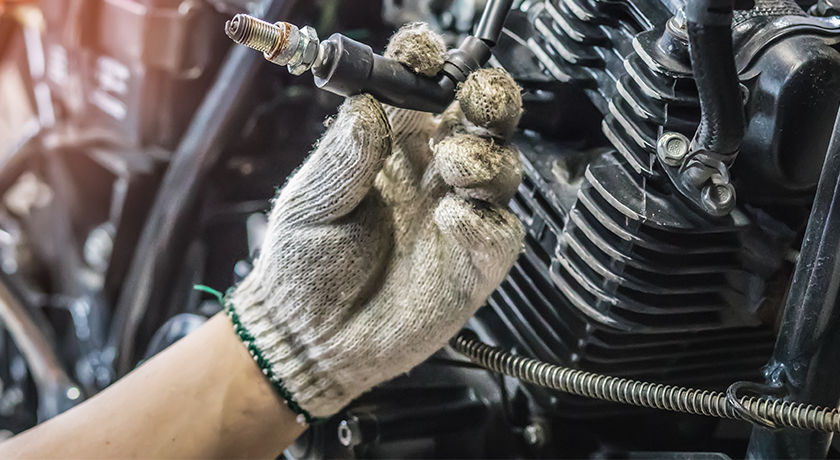
Changing your spark plugs should be a simple enough task to do, provided you take your time and do it carefully:
Tools you might need to change a spark plug:
- Motorcycle owner’s manual
- Socket wrench
- Spark plug gapper
- Last but not least, new spark plugs
Step by step:
1. First things first, what you need to do is remove the plug wire (often referred to as HT leads) from the spark plug. This wire is connected to your bike's coils and should remove fairly easily if you tug them gently.
2. Next, you will need to remove the plug itself by inserting a socket over the spark plug and keep turning it counterclockwise until the plug pops out.
3. Once you have removed the plug, you can begin to inspect its colour and check for burns. You will learn a lot from your bike's running conditions by looking at the colour of the plug - if your plug is a light tan/grey with an even burn around it, your bike is in good running order.
4. After inspection of your plugs, it's time for you to put a new one in. Check the gap between your plug with your gap tool and make sure it aligns with the gap recommended in your motorcycle owner's manual for your specific bike - to use this tool insert the plug into the tool at its thinnest point and slide up until you reach the recommended gap.
5. Now, you will need to put everything back into its original place in the reverse order that you took your bike apart. To tighten your plugs back up, we’d recommend using your hands to avoid stripping out the threads. After the plugs are tightened up, you will want to lightly tighten them further using a socket.
6. Last but not least, you can reattach your HT leads/plug wires to your plug and there you have it, you’re ready to ride again!
High Tension (HT) Leads
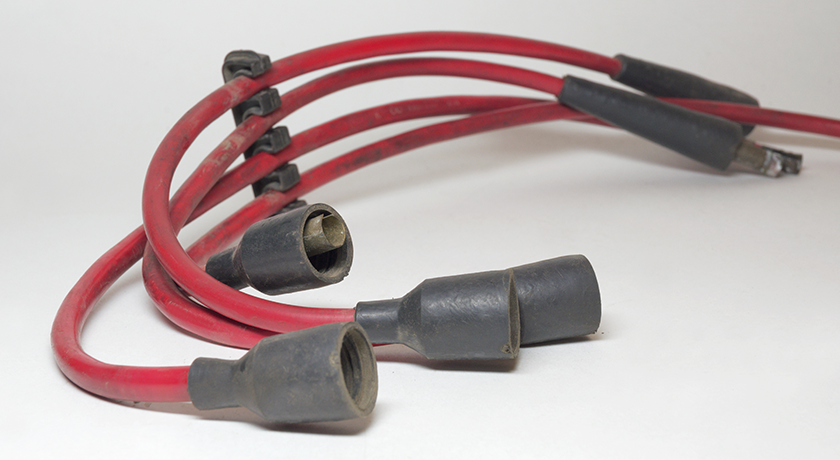
We briefly mentioned HT cables earlier in our step-by-step guide, however, making sure you know the functions of the spark plug and everything around it proves useful when carrying out those DIY tasks at home.
What does HT lead stand for?
When people talk about HT leads, they are referring to high-tension leads also known as spark plug wires.
What is the function of HT leads?
High tension leads or HT cables are wires that connect to the distributor or ignition coil in each one of the spark plugs.
Spark plug wires are made up of very flexible and heat-resistant materials such as silicone and EPDM rubber, acting as a thick layer of insulation.
It is important when you are reconnecting your spark plug wires into their places you do so by pointing them back in the correct order.
How do I know if my HT leads are faulty?
• You see a decrease in power, acceleration and fuel efficiency
One of the most common issues that can occur with HT ignition cables is engine performance problems. These cables carry the sparks from the coil and distributor and deliver them to the spark plug so combustion can occur.
If there are any issues with the spark plug cables, the spark can be disturbed which results in performance issues, and in some cases causes your engine to stall.
• Check if your engine warning light turns on
Another warning sign that your cables may be faulty is if your check engine light warning symbol is on. Faulty cables can cause the engine to misfire, both of which can set off the engine light.
• Visible wear or damage to the cables
Last but not least, check if your cables have any visible wear and tear. When cables become old, they can begin to dry out and start to crack.
Older cables can also melt and burn up due to them rubbing against hot components of the engine, which can lead to further visible wear as well as causing misfiring in the engine.
If you do suspect that your cables are having issues, or they need repairing - this is a job for the professionals! Do not attempt to try and repair these yourself…
How often do motorbike spark plugs need replacing?
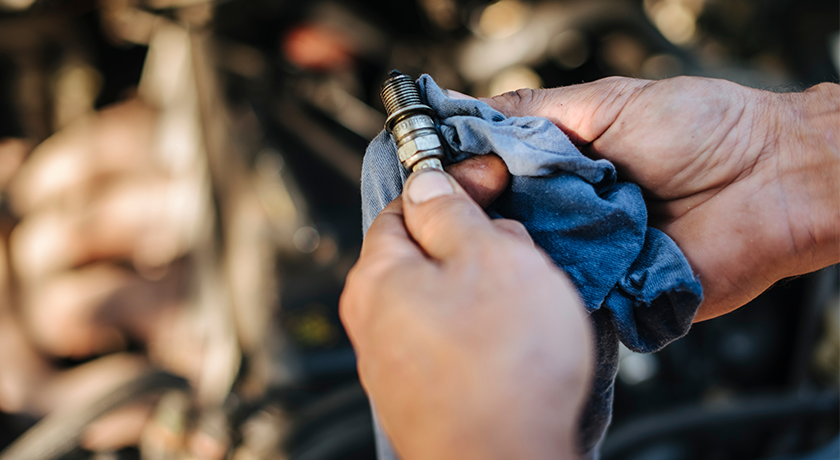
Most spark plugs have a life expectancy of anywhere between 15,000-20,000 miles, however, this will vary between the different options out there.
This is due to their location on your motorbike, sitting on the top of the engine close to the engine chamber, meaning they get extremely hot and materials begin to break down quicker.
Motorbike spark plugs also wear far quicker in comparison to a car's spark plugs - this is because the engine revs are considerably higher.
Ready to ride!
So there you have it, here is our handy go-to guide on everything you need to know about spark plugs!
It is important to note the above is just general advice, and it is always best to consult your manual, dealership, or mechanic for advice for your particular model. Only tackle maintenance tasks if you are competent to do so.
Last but not least, if you need insurance on your very own motorbike, make sure to get a motorcycle insurance quotation with Lexham!




